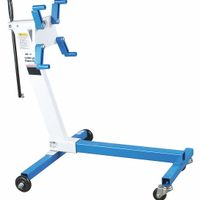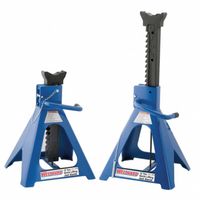- Home
- Fleet Vehicle Maintenance
- Garage Equipment
- Vehicle Lifting Support Equipment
- Vehicle Component Support Stands
Vehicle & Component Support Stands
Support stands attach to the base of jacks to bolster them and ensure safe operation during lifting. Sold in pairs, vehicle stands double the support weight that a jack can hold to be able to remove wheels or parts without tipping over and dropping the vehicle. Component stands support jacks that ar .....Read More
Frequently Asked Questions
What are the best vehicle support stands for safety?
How do I properly use vehicle support stands?
What weight capacity should my vehicle support stands have?
Are there any specific brands recommended for vehicle support stands?
How do I maintain and store vehicle support stands?
Can vehicle support stands be used on uneven surfaces?
What are the differences between vehicle support stands and jacks?

